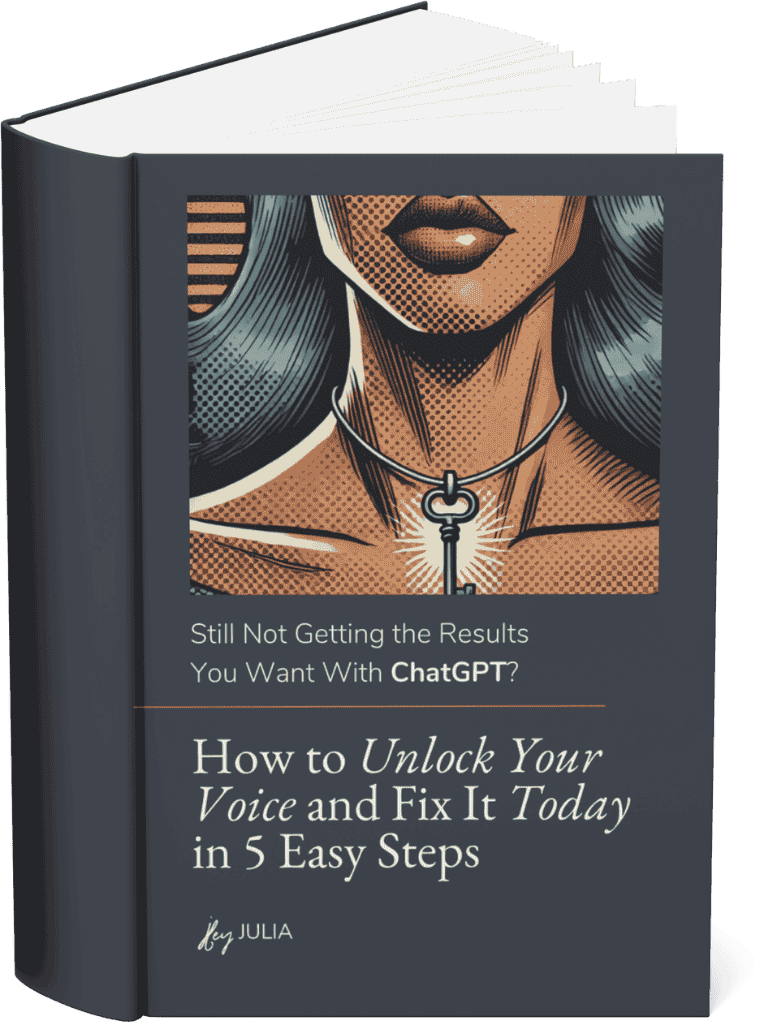AI is changing the way we work, and one of the most powerful tools at your fingertips is the ability to create your own custom GPT. Whether you’re an entrepreneur, content creator, or just someone looking to streamline your workflow, a personalized GPT can automate tasks, generate content, and even assist with research—saving you hours every week.
The best part? You don’t need to be a tech expert to build one. In this post, I’ll break down the simple five-step process to create a custom GPT that aligns with your unique needs and workflow.
Why CustomGPTs are a Game Changer
Many people think AI is only for developers or large businesses, but that couldn’t be further from the truth. A well-trained custom GPT can:
-
- Automate repetitive tasks like drafting emails or social media posts.
-
- Act as a virtual assistant tailored to your business.
-
- Generate ideas and help with creative brainstorming.
-
- Organize and retrieve information from a knowledge base.
With AI evolving rapidly, knowing how to customize your own GPT will be a valuable skill for years to come.
How to Create Your CustomGPT in 5 Steps
1. Define Your GPTs Purpose
Start by identifying what you need your GPT to do. Do you want it to help with customer support? Write blog posts? Summarize reports? The more specific you are, the better results you’ll get.
A quick brainstorming session with ChatGPT can help you refine your idea. Simply ask:
“What are some ways a custom GPT could help me with [your task]?”
2. Customize Its Instructions
Once you know your GPT’s purpose, it’s time to shape its behavior. In OpenAI’s “Create GPT” interface, you can provide clear instructions about how it should respond, what kind of tone it should use, and any specific guidelines for its output.
For example, if you want a content-writing assistant, you might specify:
“Use a friendly and engaging tone, avoid jargon, and provide SEO-friendly suggestions.”
3. Upload Reference Materials
To make your GPT sound more like you (or your brand), you can upload documents that provide context. This could include:
-
- Brand voice guidelines
-
- Past content (blog posts, emails, FAQs)
-
- Product descriptions or business information
This helps your GPT generate responses that align with your existing style and messaging.
4. Test and Refine
Before relying on your GPT, run multiple tests. Ask it to complete a few sample tasks and review its responses. Does it sound the way you want? Is it missing key details?
If the output isn’t quite right, tweak its instructions, add more context, or refine your prompts. Think of this as training your AI assistant—it improves the more you fine-tune it.
5. Automate and Integrate
Once your GPT is working well, take it a step further by integrating it into your workflow. No-code tools like Make.com, Zapier, or Google Sheets allow you to automate processes effortlessly. For example, you can set up a system where your GPT drafts social media captions and automatically uploads them to your scheduler.
Your 15-Minute Challenge
Want to get started right away? Take 15 minutes to create your first custom GPT:
- Spend 5 minutes brainstorming a simple task you want to automate.
- Use the next 10 minutes to explore the “Create GPT” feature and set up a basic assistant.
Even if you start small, this experiment can open up a whole new world of AI-powered productivity.
Final Thoughts
Custom GPTs are no longer just a futuristic concept—they’re a practical tool anyone can use today. By creating your own AI assistant, you can streamline your work, free up time for more creative tasks, and stay ahead in an increasingly AI-driven world.
If you found this helpful, check out my guide on How to Make ChatGPT Sound More Human or read How to Stay Motivated When Progress Feels Slow by Following These 5 Game-Changing Strategies for more AI strategies. And if you create your own custom GPT, I’d love to hear how it’s working for you!


